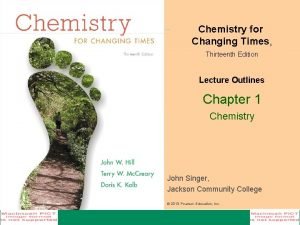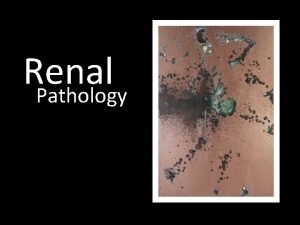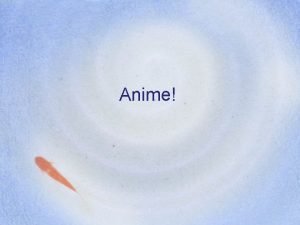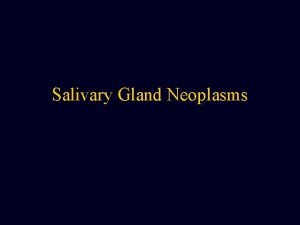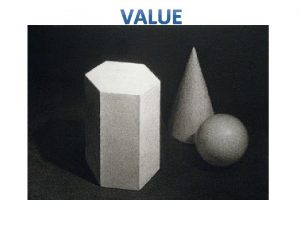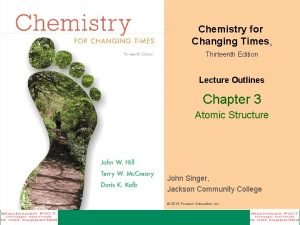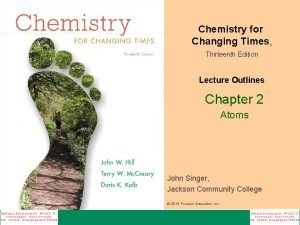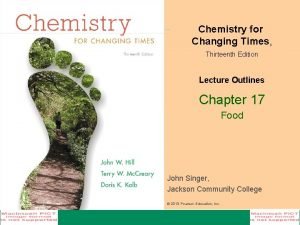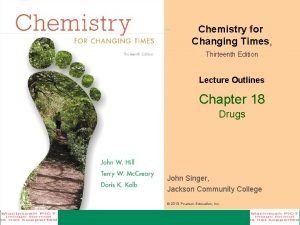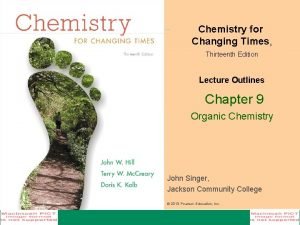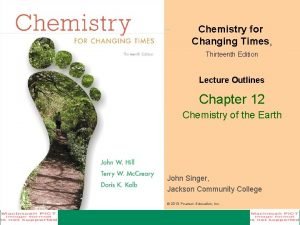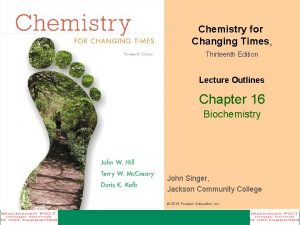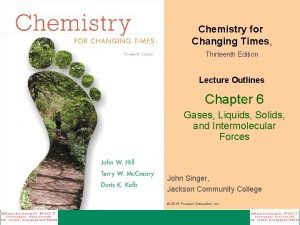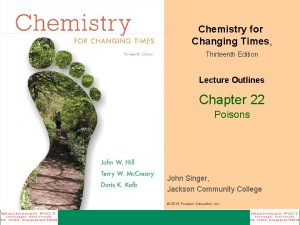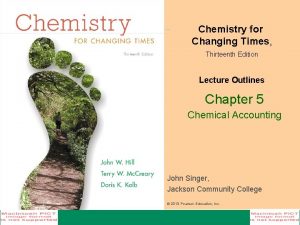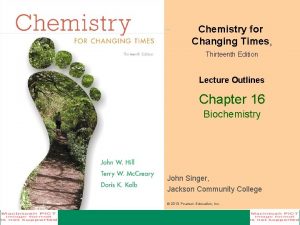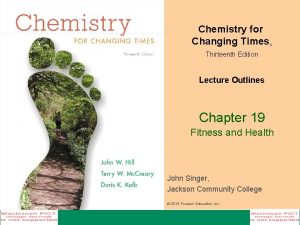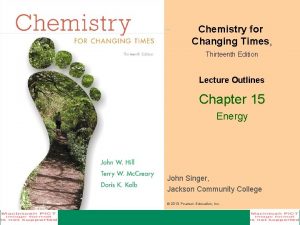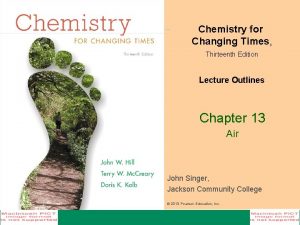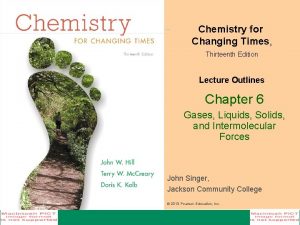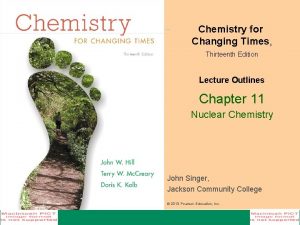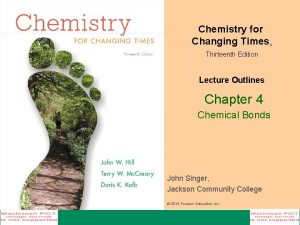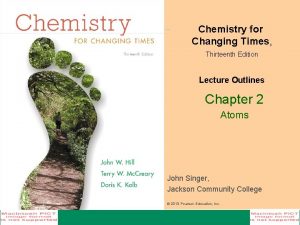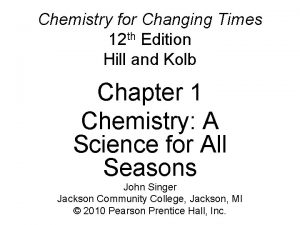Chemistry for Changing Times Thirteenth Edition Lecture Outlines









































- Slides: 41

Chemistry for Changing Times, Thirteenth Edition Lecture Outlines Chapter 21 Household Chemicals John Singer, Jackson Community College © 2013 Pearson Education, Inc.

History of Cleaning Even today, in some nonindustrial parts of the world, clothes are cleaned by beating on rocks in a river or stream, as they were in the past. Some plants such as soapworts or soapberries contain saponins, which produce a soapy lather. Wood ashes contain potassium and sodium carbonate, which form alkaline solutions in water, and have some detergent properties. Sodium carbonate is still sold today as washing soda. © 2013 Pearson Education, Inc. Chapter 21 2

Fat + Lye → Soap is made by reacting animal fat or vegetable oil with lye (Na. OH). © 2013 Pearson Education, Inc. Chapter 21 3

Fat + Lye → Soap works because one end of the molecule is hydrophilic (water attracting) and the other end is hydrophobic (water repelling). © 2013 Pearson Education, Inc. Chapter 21 4

Fat + Lye → Soap The hydrophobic “tail” dissolves into oil, leaving the hydrophilic “head” on the outside. This spherical structure is called a micelle. © 2013 Pearson Education, Inc. Chapter 21 5

Fat + Lye → Soap Oil and soapy water form an emulsion, with the soap acting as the emulsifying agent. Any substance, such as soap, that stabilizes the suspension of nonpolar substances in water is called a surfactant (surface-active) agent. © 2013 Pearson Education, Inc. Chapter 21 6

Fat + Lye → Soap Disadvantage of Soap Water that contains calcium, magnesium, and iron ions is called hard water. These ions will react with and precipitate soap, reducing its effectiveness. © 2013 Pearson Education, Inc. Chapter 21 7

Fat + Lye → Soap Water Softeners Additives such as washing soda (Na 2 CO 3. 10 H 2 O) and trisodium phosphate (TSP = Na 3 PO 4) will raise the p. H of water and precipitate calcium and magnesium ions. © 2013 Pearson Education, Inc. Chapter 21 8

Fat + Lye → Soap Water Softeners Water softening tanks are also used in homes and businesses. They contain a polymeric material that holds the calcium, magnesium, and iron ions and replaces them with sodium ions. © 2013 Pearson Education, Inc. Chapter 21 9

Synthetic Detergents During World War II, the raw materials for soap production became scarce. Synthetic detergents were developed with cleansing action similar to soap, but without the negative effects of hard water. © 2013 Pearson Education, Inc. Chapter 21 10

Synthetic Detergents ABS Detergents: Nonbiodegradable The first synthetic detergents were alkylbenzenesulfonates (ABS) detergents. Unfortunately, they are nonbiodegradable and produced a foam that appeared on natural lakes and rivers as well as in wells and sewage treatment plants. ABS detergents were banned and replaced by biodegradable detergents. © 2013 Pearson Education, Inc. Chapter 21 11

Synthetic Detergents ABS Detergents: Nonbiodegradable © 2013 Pearson Education, Inc. Chapter 21 12

Synthetic Detergents LAS Detergents: Biodegradable Linear alkylsufonates (LAS) detergents have linear chains of carbon atoms that can be broken down by microorganisms. © 2013 Pearson Education, Inc. Chapter 21 13

Laundry Detergent Formulations Laundry detergents contain a variety of compounds designed for specific functions. These compounds are classified as surfactants, builders, and brighteners. © 2013 Pearson Education, Inc. Chapter 21 14

Laundry Detergent Formulations Surfactants emulsify the soil and oils. They can be either anionic, cationic, nonionic, or amphoteric. Amphoteric surfactants carry both a positive and negative charge on the same molecule. A betaine is an example of an amphoteric surfactant. CH 3(CH 2)n. CH 2 NH 2+CH 2 COO- © 2013 Pearson Education, Inc. Chapter 21 15

Laundry Detergent Formulations Builders are added to detergent formulas to increase the detergency of the surfactant. Examples include sodium citrate (Na 3 C 6 H 5 O 7), sodium tripolyphosphate (Na 5 P 3 O 10), and sodium hexametaphosophate. These compounds act by causing the sequestration, of the calcium and magnesium ions. © 2013 Pearson Education, Inc. Chapter 21 16

Laundry Detergent Formulations Phosphate builders increase the eutrophication of lakes. Some states have banned their use. Zeolites trap calcium and magnesium ions in a cage-like structure and can substitute for phosphate builders. © 2013 Pearson Education, Inc. Chapter 21 17

Laundry Detergent Formulations Brighteners are added to detergent formulations to make clothing appear bright and new. © 2013 Pearson Education, Inc. Chapter 21 18

Laundry Detergent Formulations Liquid laundry detergents have captured much of the market in recent years. Liquid laundry detergents can either be built formulations with sodium citrate, sodium carbonate, or zeolites, or they can be unbuilt formulations high in surfactants and have no builders. © 2013 Pearson Education, Inc. Chapter 21 19

Dishwashing Detergents Dishwashing detergents for automatic dishwashers are usually strongly alkaline. They can contain sodium tripolyphosphate, sodium carbonate, sodium metasilicate, and a bleach, along with a small amount of surfactant. Sodium hydroxide may also be present. Liquid dishwashing detergents for washing dishes by hand usually contain one or more surfactants, such as LAS or cocamido DEA [CH 3(CH 2)n. CON(CH 2 OH)2]. © 2013 Pearson Education, Inc. Chapter 21 20

Fabric Softeners: Quaternary Ammonium Salts Quaternary ammonium salts with two long alkyl chains are used as fabric softeners. They attach to clothing fibers, forming a layer one molecule thick, which gives the clothing a smooth flexible softness. © 2013 Pearson Education, Inc. Chapter 21 21

Laundry Bleaches: Whiter Whites Bleaches are oxidizing agents that react with colored stains on fabrics. The more common bleaches are chlorine bleaches containing sodium hypochlorite (Na. OCl). Oxygenreleasing bleaches contain either sodium percarbonate (2 Na 2 CO 3. 3 H 2 O 2) or sodium perborate (Na. BO 2. H 2 O 2). These bleaches liberate the oxidizing agent hydrogen peroxide in hot water. © 2013 Pearson Education, Inc. Chapter 21 22

All-Purpose Cleaning Products A number of all-purpose cleaning products are commonly found in the home. These include household ammonia solutions, baking soda, and common vinegar. © 2013 Pearson Education, Inc. Chapter 21 23

Special-Purpose Cleaners Toilet bowl cleaners are usually acidic materials designed to remove calcium carbonate deposits. Scouring powders contain abrasive materials like silica (Si. O 2). They may also contain a surfactant and bleach. Glass cleaners contain isopropyl alcohol, ammonia, and sometimes vinegar. Drain cleaners usually contain sodium hydroxide to saponify grease. Some contain bits of aluminum that react with the Na. OH to release hydrogen gas to agitate the clog. Many contain bleach to degrade hair. Oven cleaners contain Na. OH to cut the greasy material on oven walls. © 2013 Pearson Education, Inc. Chapter 21 24

Organic Solvents in the Home Organic solvents are available for removing paint, adhesives, waxes, and other materials. Most are volatile and flammable. © 2013 Pearson Education, Inc. Chapter 21 25

Paints include lacquers, enamels, varnishes, oilbased coatings, and waterbased finishes. They are composed of three basic ingredients: a pigment, binder, and solvent. © 2013 Pearson Education, Inc. Chapter 21 26

Waxes are esters of long-chain fatty acids and long-chain alcohols. Paraffin wax is a mixture of long-chain hydrocarbons. Many natural waxes are being replaced by silicones. Waxes serve both plants and animals as protective coatings. © 2013 Pearson Education, Inc. Chapter 21 27

Cosmetics The U. S. Food Drug and Cosmetic Act of 1938 defined cosmetics as “articles intended to be rubbed, poured, sprinkled, or sprayed on, introduced into, or otherwise applied to the human body or any part thereof, for cleansing, beautifying, promoting attractiveness, or altering the appearance…” The main difference between drugs and cosmetics is that drugs must be proven “safe and effective” before they can be marketed. © 2013 Pearson Education, Inc. Chapter 21 28

Cosmetics Skin Creams and Lotions Cosmetics are applied to the dead cells of the corneal layer of the skin. © 2013 Pearson Education, Inc. Chapter 21 29

Cosmetics Skin Creams and Lotions A lotion is an emulsion of oil droplets dispersed in water. A cream is an emulsion of water droplets dispersed in oil. © 2013 Pearson Education, Inc. Chapter 21 30

Cosmetics Skin Creams and Lotions The oily substance of the cream or lotion forms a protective film over the skin that retains moisture. Emollients protect the skin by coating and softening it. Moisturizers hold moisture to the skin. Humectants, such as glycerol or lactic acid, actually attract water to the skin. © 2013 Pearson Education, Inc. Chapter 21 31

Cosmetics Sunscreen Lotions Sunscreen lotions work by blocking shortwavelength (UV-B) radiation, but allowing the less harmful long-wavelength (UV-A) radiation to pass. Older formulations contained paraminobenzoic acid (PABA), which is water-soluble. Newer formulations contain octyl methoxycinnamate (OMC), which is insoluble in water. Skin protection factor (SPF) indicates how long you can stay in the sun compared to no protection, i. e. , an SPF of 15 means that you can stay in the sunlight 15 times longer than with no protection. Sunblocks contain opaque powders like zinc or titanium oxide that block all UV radiation. © 2013 Pearson Education, Inc. Chapter 21 32

Cosmetics Lipsticks and lip balm are similar to skin creams or lotions in composition and function. They contain oil and a wax and work by holding moisture against the skin. Eye makeup is used to accentuate and decorate the eyes. This makeup typically contain waxes, soaps, fats, oils, and pigments. © 2013 Pearson Education, Inc. Chapter 21 33

Cosmetics Deodorants and Antiperspirants Deodorants contain perfume to mask body odor and a germicide to kill odor-causing bacteria. Antiperspirants may contain perfumes and germicides, but also contain compounds such as aluminum chlorohydrate [Al 2(OH)5 Cl. 2 H 2 O], which are astringents that constrict the pores of sweat glands to prevent perspiration. © 2013 Pearson Education, Inc. Chapter 21 34

Toothpaste is perhaps the most important cosmetic product. Toothpastes are typically composed of a detergent and an abrasive. In addition, there are flavoring agents, coloring agents, sweeteners, and thickeners. © 2013 Pearson Education, Inc. Chapter 21 35

Perfumes, Colognes, and Aftershaves Perfumes may contain many ingredients. Their components are divided into three notes. Notes are categories of volatility. The first note is the most volatile fraction and the third or end note is the least volatile fraction. The end notes often have musky odors. Colognes are perfumes that have been diluted with alcohol or alcohol/water mixtures. Aftershave lotions are similar to colognes, but contain a higher percentage of alcohol. Some contain menthol or an emollient. © 2013 Pearson Education, Inc. Chapter 21 36

Hair Chemistry Shampoos contain a detergent such as sodium dodecyl sulfate. They can also contain coloring agents, fragrances, and proteins for repairing split ends. Conditioners are mainly long -chain alcohols or quaternary ammonium salts that coat the surface of the hair and allow the strands to slide past each other. © 2013 Pearson Education, Inc. Chapter 21 37

Hair Chemistry Hair color is determined by two pigments, melanin (brownish-black) and phaeomelanin (red-brown). Hair color can be lightened by oxidizing with hydrogen peroxide or changed by dying. Hair treatments like Grecian Formula® contain lead acetate [Pb(CH 3 COO)2]. The lead ions penetrate the hair shaft and react with the sulfur to form black lead sulfide. © 2013 Pearson Education, Inc. Chapter 21 38

Hair Chemistry Perms are accomplished by breaking the disulfide bonds in hair proteins with reducing agents, such as thioglycolic acid. The hair is then curled on rollers and treated with hydrogen peroxide to reestablish new disulfide linkages. © 2013 Pearson Education, Inc. Chapter 21 39

Hair Chemistry Hair sprays are resins that form a sticky film to hold the hair in place. A mousse is simply a foam that contains such a resin. Hair removers are called depilatories. Most contain a strongly basic soluble sulfur compound that attacks the peptide bonds in the hair so that it can be washed off. Hair restorers, such as Rogaine®, contain Minoxidil was first used as a treatment for high blood pressure. It has the ability to grow fine hair when it is applied to any skin where hair follicles are located. © 2013 Pearson Education, Inc. Chapter 21 40

The Well-Informed Consumer Many companies spend a lot of money on advertising their products and the most expensive product is not always the best. It is worth the effort to be informed about the products that you buy and use. © 2013 Pearson Education, Inc. Chapter 21 41
 Carsonian nightmare
Carsonian nightmare Changing times essay
Changing times essay Activity 1 changing times
Activity 1 changing times The times they are a-changin'
The times they are a-changin' Factors of 168
Factors of 168 01:640:244 lecture notes - lecture 15: plat, idah, farad
01:640:244 lecture notes - lecture 15: plat, idah, farad Types of outlines
Types of outlines Lesson outline for teaching
Lesson outline for teaching Kairos talk outlines
Kairos talk outlines Commercial law outlines
Commercial law outlines Four main components for effective outlines
Four main components for effective outlines A business plan is a document that outlines
A business plan is a document that outlines Benign nephrosclerosis pathology outlines
Benign nephrosclerosis pathology outlines Sermon outlines on the shunammite woman
Sermon outlines on the shunammite woman Anime outline
Anime outline Two types of outlines
Two types of outlines A haunted house by virginia woolf characters
A haunted house by virginia woolf characters Ksf outlines
Ksf outlines Mucoepidermoid carcinoma histology
Mucoepidermoid carcinoma histology Cmmi model outlines
Cmmi model outlines Outline of the book of acts by chapter
Outline of the book of acts by chapter Exegetical outline
Exegetical outline Cjis security awareness
Cjis security awareness Mun position paper outline
Mun position paper outline Define:visible
Define:visible Crohn’s disease
Crohn’s disease Disaster management in libraries and information centres
Disaster management in libraries and information centres Using mis 10th edition
Using mis 10th edition Chapter 1
Chapter 1 Advanced inorganic chemistry lecture notes
Advanced inorganic chemistry lecture notes Atmospheric chemistry lecture notes
Atmospheric chemistry lecture notes Organic chemistry david klein 3rd edition
Organic chemistry david klein 3rd edition Organic chemistry (3rd) edition chapter 1 problem 16s
Organic chemistry (3rd) edition chapter 1 problem 16s Is alkane an organic compound
Is alkane an organic compound Introductory chemistry 4th edition
Introductory chemistry 4th edition Prefix multipliers
Prefix multipliers Introductory chemistry 5th edition answers
Introductory chemistry 5th edition answers The central science 14th edition
The central science 14th edition Reaction of grignard reagent with acid chloride
Reaction of grignard reagent with acid chloride David klein organic chemistry 3rd edition
David klein organic chemistry 3rd edition Ap chemistry notes zumdahl
Ap chemistry notes zumdahl Organic chemistry third edition david klein
Organic chemistry third edition david klein
